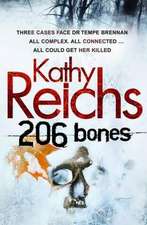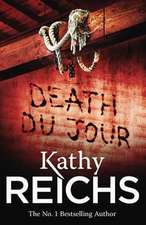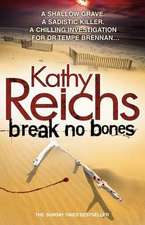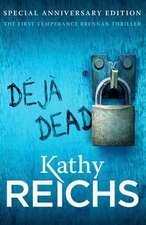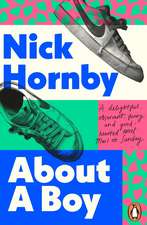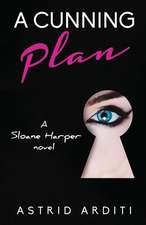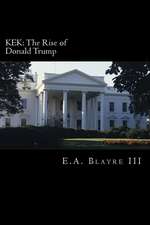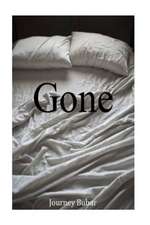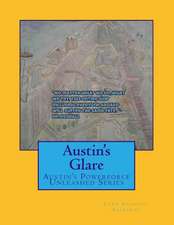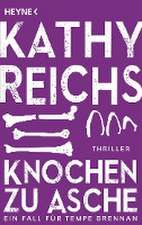Monday Mourning: Temperance Brennan Novels
Autor Kathy Reichsen Limba Engleză Paperback – 31 mai 2005
The bones of three young women are unearthed in the basement of a Montreal pizza parlor, and forensic anthropologist Tempe Brennan has unsolved murder on her mind as she examines the shallowly buried remains. Coming up against a homicide cop who is convinced the dead have been entombed on the site for centuries, Tempe perseveres, even with her own relationship with Detective Andrew Ryan at a delicate turning point. In the lab, the clean, well-perserved bones offer few clues. But when Carbon 14 confirms her hunch that these were recent deaths despite the antique buttons found near the bodies, Tempe's probing must produce answers quickly to stop a killer whose grisly handiwork has seen the light of day.
| Toate formatele și edițiile | Preț | Express |
|---|---|---|
| Paperback (2) | 55.00 lei 24-35 zile | +23.03 lei 4-10 zile |
| CORNERSTONE – 31 aug 2011 | 55.00 lei 24-35 zile | +23.03 lei 4-10 zile |
| Simon&Schuster – 24 iun 2024 | 60.65 lei 3-5 săpt. |
Preț: 55.03 lei
Nou
Puncte Express: 83
Preț estimativ în valută:
10.53€ • 11.04$ • 8.78£
10.53€ • 11.04$ • 8.78£
Carte indisponibilă temporar
Doresc să fiu notificat când acest titlu va fi disponibil:
Se trimite...
Preluare comenzi: 021 569.72.76
Specificații
ISBN-13: 9780743453011
ISBN-10: 0743453018
Pagini: 416
Dimensiuni: 106 x 174 x 26 mm
Greutate: 0.2 kg
Ediția:Reprint
Editura: Simon&Schuster
Seria Temperance Brennan Novels
ISBN-10: 0743453018
Pagini: 416
Dimensiuni: 106 x 174 x 26 mm
Greutate: 0.2 kg
Ediția:Reprint
Editura: Simon&Schuster
Seria Temperance Brennan Novels
Recenzii
"Fans of TV's CSI: Crime Scene Investigation should be in heaven." -- People
"Fans of Patricia Cornwell will relish the forensic detail...Fast-paced...suspenseful." -- Booklist
"Fans of Patricia Cornwell will relish the forensic detail...Fast-paced...suspenseful." -- Booklist
Extras
Chapter 1
My eyes flew up as muscle, bone, and guts splattered against rock just three feet from me.
The mangled body seemed glued for a moment, then slid downward, leaving a smear of blood and hair.
I felt warm droplets on my cheek, backhanded them with a gloved hand.
Still squatting, I swiveled.
"Assez!" Enough!
Sergeant-détective Luc Claudel's brows plunged into a V. He lowered but did not holster his nine-millimeter.
"Rats. They are the devil's spawn." Claudel's French was clipped and nasal, reflecting his upriver roots.
"Throw rocks," I snapped.
"That bastard was big enough to throw them back."
Hours of squatting in the cold and damp on a December Monday in Montreal had taken a toll. My knees protested as I rose to a standing position.
"Where is Charbonneau?" I asked, rotating one booted foot, then the other.
"Questioning the owner. I wish him luck. Moron has the IQ of pea soup."
"The owner discovered this?" I flapped a hand at the ground behind me.
"Non. Le plombier."
"What was a plumber doing in the cellar?"
"Genius spotted a trapdoor beside the commode, decided to do some underground exploration to acquaint himself with the sewage pipes."
Remembering my own descent down the rickety staircase, I wondered why anyone would take the risk.
"The bones were lying on the surface?"
"Says he tripped on something sticking out of the ground. There." Claudel cocked his chin at a shallow pit where the south wall met the dirt floor. "Pulled it loose. Showed the owner. Together they checked out the local library's anatomy collection to see if the bone was human. Picked a book with nice color pictures since they probably can't read."
I was about to ask a follow-up question when something clicked above us. Claudel and I looked up, expecting his partner.
Instead of Charbonneau, we saw a scarecrow man in a knee-length sweater, baggy jeans, and dirty blue Nikes. Pigtails wormed from the lower edge of a red bandanna wrapped his head.
The man was crouched in the doorway, pointing a throwaway Kodak in my direction.
Claudel's V narrowed and his parrot nose went a deeper red. "Tabernac!"
Two more clicks, then bandanna man scrabbled sideways.
Holstering his weapon, Claudel grabbed the wooden railing. "Until SIJ returns, throw rocks."
SIJ -- Section d'Identité Judiciaire. The Quebec equivalent of Crime Scene Recovery.
I watched Claudel's perfectly fitted buttocks disappear through the small rectangular opening. Though tempted, I pegged not a single rock.
Upstairs, muted voices, the clump of boots. Downstairs, just the hum of the generator for the portable lights.
Breath suspended, I listened to the shadows around me.
No squeaking. No scratching. No scurrying feet.
Quick scan.
No beady eyes. No naked, scaly tails.
The little buggers were probably regrouping for another offensive.
Though I disagreed with Claudel's approach to the problem, I was with him on one thing: I could do without the rodents.
Satisfied that I was alone for the moment, I refocused on the moldy crate at my feet. Dr. Energy's Power Tonic. Dead tired? Dr. Energy's makes your bones want to get up and dance.
Not these bones, Doc.
I gazed at the crate's grisly contents.
Though most of the skeleton remained caked, dirt had been brushed from some bones. Their outer surfaces looked chestnut under the harsh illumination of the portable lights. A clavicle. Ribs. A pelvis.
A human skull.
Damn.
Though I'd said it a half dozen times, reiteration couldn't hurt. I'd come from Charlotte to Montreal a day early to prepare for court on Tuesday. A man had been accused of killing and dismembering his wife. I'd be testifying on the saw mark analysis I'd done on her skeleton. It was complicated material and I'd wanted to review my case file. Instead, I was freezing my ass digging up the basement of a pizza parlor.
Pierre LaManche had visited my office early this morning. I'd recognized the look, correctly guessed what was coming as soon as I saw him.
Bones had been found in the cellar of a pizza-by-the-slice joint, my boss had told me. The owner had called the police. The police had called the coroner. The coroner had called the medicolegal lab.
LaManche wanted me to check it out.
"Today?"
"S'il vous plaît."
"I'm on the stand tomorrow."
"The Pétit trial?"
I nodded.
"The remains are probably those of animals," LaManche said in his precise, Parisian French. "It should not take you long."
"Where?" I reached for a tablet.
LaManche read the address from a paper in his hand. Rue Ste-Catherine, a few blocks east of Centre-ville.
CUM turf.
Claudel.
The thought of working with Claudel had triggered the morning's first "damn."
There are some small-town departments around the island city of Montreal, but the two main players in law enforcement are the SQ and the CUM. La Sûreté du Québec is the provincial force. The SQ rules in the boonies, and in towns lacking municipal departments. The Police de la Communauté Urbaine de Montréal, or CUM, are the city cops. The island belongs to the CUM.
Luc Claudel and Michel Charbonneau are detectives with the Major Crimes Division of the CUM. As forensic anthropologist for the province of Quebec, I've worked with both over the years. With Charbonneau, the experience is always a pleasure. With his partner, the experience is always an experience. Though a good cop, Luc Claudel has the patience of a firecracker, the sensitivity of Vlad the Impaler, and a persistent skepticism as to the value of forensic anthropology.
Snappy dresser, though.
Dr. Energy's crate had already been loaded with loose bones when I'd arrived in the basement two hours earlier. Though Claudel had yet to provide many details, I assumed the bone collecting had been done by the owner, perhaps with the assistance of the hapless plumber. My job had been to determine if the remains were human.
They were.
That finding had generated the morning's second "damn."
My next task had been to determine whether anyone else lay in repose beneath the surface of the cellar. I'd started with three exploratory techniques.
Side lighting the floor with a flashlight beam had shown depressions in the dirt. Probing had located resistance below each depression, suggesting the presence of subsurface objects. Test trenching had produced human bones.
Bad news for a leisurely review of the Pétit file.
When I'd rendered my opinion, Claudel and Charbonneau had contributed to "damn"s three through five. A few quebecois expletives had been added for emphasis.
SIJ had been called. The crime scene unit routine had begun. Lights had been set up. Pictures had been taken. While Claudel and Charbonneau questioned the owner and his assistant, a ground penetrating radar unit had been dragged around the cellar. The GPR showed subsurface disturbances beginning four inches down in each depression. Otherwise, the basement was clean.
Claudel and his semiautomatic manned rat patrol while the SIJ techs took a break and I laid out two simple four-square grids. I was attaching the last string to the last stake when Claudel enjoyed his Rambo moment with the rats.
Now what? Wait for the SIJ techs to return?
Right.
Using SIJ equipment, I shot prints and video. Then I rubbed circulation into my hands, replaced my gloves, folded into a squat, and began troweling soil from square 1-A.
As I dug, I felt the usual crime scene rush. The quickened senses. The intense curiosity. What if it's nothing? What if it's something?
The anxiety.
What if I smash a critically important section to hell?
I thought of other excavations. Other deaths. A wannabe saint in a burned-out church. A decapitated teen at a biker crib. Bullet-riddled dopers in a streamside grave.
I don't know how long I'd been digging when the SIJ team returned, the taller of the two carrying a Styrofoam cup. I searched my memory for his name.
Root. Racine. Tall and thin like a root. The mnemonic worked.
René Racine. New guy. We'd processed a handful of scenes. His shorter counterpart was Pierre Gilbert. I'd known him a decade.
Sipping tepid coffee, I explained what I'd done in their absence. Then I asked Gilbert to film and haul dirt, Racine to screen.
Back to the grid.
When I'd taken square 1-A down three inches, I moved on to 1-B. Then 1-C and 1-D.
Nothing but dirt.
OK. The GPR showed a discrepancy beginning four inches below the surface.
I kept digging.
My fingers and toes numbed. My bone marrow chilled. I lost track of time.
Gilbert carried buckets of dirt from my grid to the screen. Racine sifted. Now and then Gilbert shot a pic. When all of grid one was down a level three inches, I went back to square 1-A. At a depth of six inches I shifted squares as I had before.
I'd taken two swipes at square 1-B when I noticed a change in soil color. I asked Gilbert to reposition a light.
One glance and my diastolic ratcheted up.
"Bingo."
Gilbert squatted by my side. Racine joined him.
"Quoi?" Gilbert asked. What?
I ran the tip of my trowel around the outer edge of the blob seeping into 1-B.
"The dirt's darker," Racine observed.
"Staining indicates decomposition," I explained.
Both techs looked at me.
I pointed to squares 1-C and 1-D. "Someone or something's going south under there."
"Alert Claudel?" Gilbert asked.
"Make his day."
Four hours later all my digits were ice. Though I'd tuqued my head and scarved my neck, I was shivering inside my one-hundred-percent-microporous-polyurethane-polymerized-coated-nylon-guaranteed-to-forty-below-Celsius Kanuk parka.
Gilbert was moving around the cellar, snapping and filming from various angles. Racine was watching, gloved hands thrust into his armpits for warmth. Both looked comfy in their arctic jumpsuits.
The two homicide cops, Claudel and Charbonneau, stood side by side, feet spread, hands clasped in front of their genitals. Each wore a black woolen overcoat and black leather gloves. Neither wore a happy face.
Eight dead rats adorned the base of the walls.
The plumber's pit and the two depressions were open to a depth of two feet. The former had yielded a few scattered bones left behind by the plumber and owner. The depression trenches were a different story.
The skeleton under grid one lay in a fetal curl. It was unclothed, and not a single artifact had turned up in the screen.
The individual under grid two had been bundled before burial. The parts we could see looked fully skeletal.
Flicking the last particles of dirt from the second burial, I set aside my paintbrush, stood, and stomped my feet to warm them.
"That a blanket?" Charbonneau's voice sounded husky from the cold.
"Looks more like leather," I said.
He jabbed a thumb at Dr. Energy's crate.
"This the rest of the dude in the box?"
Sergeant-détective Michel Charbonneau was born in Chicoutimi, six hours up the St. Lawrence from Montreal, in a region known as the Saguenay. Before entering the CUM, he'd spent several years working in the West Texas oil fields. Proud of his cowboy youth, Charbonneau always addressed me in my mother tongue. His English was good, though "de"s replaced "the"s, syllables were often inappropriately accented, and his phrasing used enough slang to fill a ten-gallon hat.
"Let's hope so."
"You hope so?" A small vapor cloud puffed from Claudel's mouth.
"Yes, Monsieur Claudel. I hope so."
Claudel's lips tucked in, but he said nothing.
When Gilbert finished shooting the bundled burial, I dropped to my knees and tugged at a corner of the leather. It tore.
Changing from my warm woolies to surgical gloves, I leaned in and began teasing free an edge, gingerly separating, lifting, then rolling the leather backward onto itself.
With the outer layer fully peeled to the left, I began on the inner. At places, fibers adhered to the skeleton. Hands shaking from cold and nervousness, I scalpeled rotten leather from underlying bone.
"What's that white stuff?" Racine asked.
"Adipocere."
"Adipocere," he repeated.
"Grave wax," I said, not in the mood for a chemistry lesson. "Fatty acids and calcium soaps from muscle or fat undergoing chemical changes, usually after long burial or immersion in water."
"Why's it not on the other skeleton?"
"I don't know."
I heard Claudel puff air through his lips. I ignored him.
Fifteen minutes later I'd detached the inner layer and laid back the shroud, fully exposing the skeleton.
Though damaged, the skull was clearly present.
"Three heads, three people." Charbonneau stated the obvious.
"Tabernouche," Claudel said.
"Damn," I said.
Gilbert and Racine remained mute.
"Any idea what we've got here, Doc?" Charbonneau asked.
I creaked to my feet. Eight eyes followed me to Dr. Energy's crate.
One by one I removed and observed the two pelvic halves, then the skull.
Crossing to the first trench, I knelt, extricated, and inspected the same skeletal elements.
Dear God.
Replacing those bones, I crawled to the second trench, leaned in, and studied the skull fragments.
No. Not again. The universal victims.
I teased free the right demi-pelvis.
Breath billowed in front of five faces.
Sitting back on my heels, I cleaned dirt from the pubic symphysis.
And felt something go cold in my chest.
Three women. Barely past girl.
Copyright © 2004 by Temperance Brennan, L.P.
Monday, Monday... Can't trust that day...
As the tune played inside my head, gunfire exploded in the cramped underground space around me.My eyes flew up as muscle, bone, and guts splattered against rock just three feet from me.
The mangled body seemed glued for a moment, then slid downward, leaving a smear of blood and hair.
I felt warm droplets on my cheek, backhanded them with a gloved hand.
Still squatting, I swiveled.
"Assez!" Enough!
Sergeant-détective Luc Claudel's brows plunged into a V. He lowered but did not holster his nine-millimeter.
"Rats. They are the devil's spawn." Claudel's French was clipped and nasal, reflecting his upriver roots.
"Throw rocks," I snapped.
"That bastard was big enough to throw them back."
Hours of squatting in the cold and damp on a December Monday in Montreal had taken a toll. My knees protested as I rose to a standing position.
"Where is Charbonneau?" I asked, rotating one booted foot, then the other.
"Questioning the owner. I wish him luck. Moron has the IQ of pea soup."
"The owner discovered this?" I flapped a hand at the ground behind me.
"Non. Le plombier."
"What was a plumber doing in the cellar?"
"Genius spotted a trapdoor beside the commode, decided to do some underground exploration to acquaint himself with the sewage pipes."
Remembering my own descent down the rickety staircase, I wondered why anyone would take the risk.
"The bones were lying on the surface?"
"Says he tripped on something sticking out of the ground. There." Claudel cocked his chin at a shallow pit where the south wall met the dirt floor. "Pulled it loose. Showed the owner. Together they checked out the local library's anatomy collection to see if the bone was human. Picked a book with nice color pictures since they probably can't read."
I was about to ask a follow-up question when something clicked above us. Claudel and I looked up, expecting his partner.
Instead of Charbonneau, we saw a scarecrow man in a knee-length sweater, baggy jeans, and dirty blue Nikes. Pigtails wormed from the lower edge of a red bandanna wrapped his head.
The man was crouched in the doorway, pointing a throwaway Kodak in my direction.
Claudel's V narrowed and his parrot nose went a deeper red. "Tabernac!"
Two more clicks, then bandanna man scrabbled sideways.
Holstering his weapon, Claudel grabbed the wooden railing. "Until SIJ returns, throw rocks."
SIJ -- Section d'Identité Judiciaire. The Quebec equivalent of Crime Scene Recovery.
I watched Claudel's perfectly fitted buttocks disappear through the small rectangular opening. Though tempted, I pegged not a single rock.
Upstairs, muted voices, the clump of boots. Downstairs, just the hum of the generator for the portable lights.
Breath suspended, I listened to the shadows around me.
No squeaking. No scratching. No scurrying feet.
Quick scan.
No beady eyes. No naked, scaly tails.
The little buggers were probably regrouping for another offensive.
Though I disagreed with Claudel's approach to the problem, I was with him on one thing: I could do without the rodents.
Satisfied that I was alone for the moment, I refocused on the moldy crate at my feet. Dr. Energy's Power Tonic. Dead tired? Dr. Energy's makes your bones want to get up and dance.
Not these bones, Doc.
I gazed at the crate's grisly contents.
Though most of the skeleton remained caked, dirt had been brushed from some bones. Their outer surfaces looked chestnut under the harsh illumination of the portable lights. A clavicle. Ribs. A pelvis.
A human skull.
Damn.
Though I'd said it a half dozen times, reiteration couldn't hurt. I'd come from Charlotte to Montreal a day early to prepare for court on Tuesday. A man had been accused of killing and dismembering his wife. I'd be testifying on the saw mark analysis I'd done on her skeleton. It was complicated material and I'd wanted to review my case file. Instead, I was freezing my ass digging up the basement of a pizza parlor.
Pierre LaManche had visited my office early this morning. I'd recognized the look, correctly guessed what was coming as soon as I saw him.
Bones had been found in the cellar of a pizza-by-the-slice joint, my boss had told me. The owner had called the police. The police had called the coroner. The coroner had called the medicolegal lab.
LaManche wanted me to check it out.
"Today?"
"S'il vous plaît."
"I'm on the stand tomorrow."
"The Pétit trial?"
I nodded.
"The remains are probably those of animals," LaManche said in his precise, Parisian French. "It should not take you long."
"Where?" I reached for a tablet.
LaManche read the address from a paper in his hand. Rue Ste-Catherine, a few blocks east of Centre-ville.
CUM turf.
Claudel.
The thought of working with Claudel had triggered the morning's first "damn."
There are some small-town departments around the island city of Montreal, but the two main players in law enforcement are the SQ and the CUM. La Sûreté du Québec is the provincial force. The SQ rules in the boonies, and in towns lacking municipal departments. The Police de la Communauté Urbaine de Montréal, or CUM, are the city cops. The island belongs to the CUM.
Luc Claudel and Michel Charbonneau are detectives with the Major Crimes Division of the CUM. As forensic anthropologist for the province of Quebec, I've worked with both over the years. With Charbonneau, the experience is always a pleasure. With his partner, the experience is always an experience. Though a good cop, Luc Claudel has the patience of a firecracker, the sensitivity of Vlad the Impaler, and a persistent skepticism as to the value of forensic anthropology.
Snappy dresser, though.
Dr. Energy's crate had already been loaded with loose bones when I'd arrived in the basement two hours earlier. Though Claudel had yet to provide many details, I assumed the bone collecting had been done by the owner, perhaps with the assistance of the hapless plumber. My job had been to determine if the remains were human.
They were.
That finding had generated the morning's second "damn."
My next task had been to determine whether anyone else lay in repose beneath the surface of the cellar. I'd started with three exploratory techniques.
Side lighting the floor with a flashlight beam had shown depressions in the dirt. Probing had located resistance below each depression, suggesting the presence of subsurface objects. Test trenching had produced human bones.
Bad news for a leisurely review of the Pétit file.
When I'd rendered my opinion, Claudel and Charbonneau had contributed to "damn"s three through five. A few quebecois expletives had been added for emphasis.
SIJ had been called. The crime scene unit routine had begun. Lights had been set up. Pictures had been taken. While Claudel and Charbonneau questioned the owner and his assistant, a ground penetrating radar unit had been dragged around the cellar. The GPR showed subsurface disturbances beginning four inches down in each depression. Otherwise, the basement was clean.
Claudel and his semiautomatic manned rat patrol while the SIJ techs took a break and I laid out two simple four-square grids. I was attaching the last string to the last stake when Claudel enjoyed his Rambo moment with the rats.
Now what? Wait for the SIJ techs to return?
Right.
Using SIJ equipment, I shot prints and video. Then I rubbed circulation into my hands, replaced my gloves, folded into a squat, and began troweling soil from square 1-A.
As I dug, I felt the usual crime scene rush. The quickened senses. The intense curiosity. What if it's nothing? What if it's something?
The anxiety.
What if I smash a critically important section to hell?
I thought of other excavations. Other deaths. A wannabe saint in a burned-out church. A decapitated teen at a biker crib. Bullet-riddled dopers in a streamside grave.
I don't know how long I'd been digging when the SIJ team returned, the taller of the two carrying a Styrofoam cup. I searched my memory for his name.
Root. Racine. Tall and thin like a root. The mnemonic worked.
René Racine. New guy. We'd processed a handful of scenes. His shorter counterpart was Pierre Gilbert. I'd known him a decade.
Sipping tepid coffee, I explained what I'd done in their absence. Then I asked Gilbert to film and haul dirt, Racine to screen.
Back to the grid.
When I'd taken square 1-A down three inches, I moved on to 1-B. Then 1-C and 1-D.
Nothing but dirt.
OK. The GPR showed a discrepancy beginning four inches below the surface.
I kept digging.
My fingers and toes numbed. My bone marrow chilled. I lost track of time.
Gilbert carried buckets of dirt from my grid to the screen. Racine sifted. Now and then Gilbert shot a pic. When all of grid one was down a level three inches, I went back to square 1-A. At a depth of six inches I shifted squares as I had before.
I'd taken two swipes at square 1-B when I noticed a change in soil color. I asked Gilbert to reposition a light.
One glance and my diastolic ratcheted up.
"Bingo."
Gilbert squatted by my side. Racine joined him.
"Quoi?" Gilbert asked. What?
I ran the tip of my trowel around the outer edge of the blob seeping into 1-B.
"The dirt's darker," Racine observed.
"Staining indicates decomposition," I explained.
Both techs looked at me.
I pointed to squares 1-C and 1-D. "Someone or something's going south under there."
"Alert Claudel?" Gilbert asked.
"Make his day."
Four hours later all my digits were ice. Though I'd tuqued my head and scarved my neck, I was shivering inside my one-hundred-percent-microporous-polyurethane-polymerized-coated-nylon-guaranteed-to-forty-below-Celsius Kanuk parka.
Gilbert was moving around the cellar, snapping and filming from various angles. Racine was watching, gloved hands thrust into his armpits for warmth. Both looked comfy in their arctic jumpsuits.
The two homicide cops, Claudel and Charbonneau, stood side by side, feet spread, hands clasped in front of their genitals. Each wore a black woolen overcoat and black leather gloves. Neither wore a happy face.
Eight dead rats adorned the base of the walls.
The plumber's pit and the two depressions were open to a depth of two feet. The former had yielded a few scattered bones left behind by the plumber and owner. The depression trenches were a different story.
The skeleton under grid one lay in a fetal curl. It was unclothed, and not a single artifact had turned up in the screen.
The individual under grid two had been bundled before burial. The parts we could see looked fully skeletal.
Flicking the last particles of dirt from the second burial, I set aside my paintbrush, stood, and stomped my feet to warm them.
"That a blanket?" Charbonneau's voice sounded husky from the cold.
"Looks more like leather," I said.
He jabbed a thumb at Dr. Energy's crate.
"This the rest of the dude in the box?"
Sergeant-détective Michel Charbonneau was born in Chicoutimi, six hours up the St. Lawrence from Montreal, in a region known as the Saguenay. Before entering the CUM, he'd spent several years working in the West Texas oil fields. Proud of his cowboy youth, Charbonneau always addressed me in my mother tongue. His English was good, though "de"s replaced "the"s, syllables were often inappropriately accented, and his phrasing used enough slang to fill a ten-gallon hat.
"Let's hope so."
"You hope so?" A small vapor cloud puffed from Claudel's mouth.
"Yes, Monsieur Claudel. I hope so."
Claudel's lips tucked in, but he said nothing.
When Gilbert finished shooting the bundled burial, I dropped to my knees and tugged at a corner of the leather. It tore.
Changing from my warm woolies to surgical gloves, I leaned in and began teasing free an edge, gingerly separating, lifting, then rolling the leather backward onto itself.
With the outer layer fully peeled to the left, I began on the inner. At places, fibers adhered to the skeleton. Hands shaking from cold and nervousness, I scalpeled rotten leather from underlying bone.
"What's that white stuff?" Racine asked.
"Adipocere."
"Adipocere," he repeated.
"Grave wax," I said, not in the mood for a chemistry lesson. "Fatty acids and calcium soaps from muscle or fat undergoing chemical changes, usually after long burial or immersion in water."
"Why's it not on the other skeleton?"
"I don't know."
I heard Claudel puff air through his lips. I ignored him.
Fifteen minutes later I'd detached the inner layer and laid back the shroud, fully exposing the skeleton.
Though damaged, the skull was clearly present.
"Three heads, three people." Charbonneau stated the obvious.
"Tabernouche," Claudel said.
"Damn," I said.
Gilbert and Racine remained mute.
"Any idea what we've got here, Doc?" Charbonneau asked.
I creaked to my feet. Eight eyes followed me to Dr. Energy's crate.
One by one I removed and observed the two pelvic halves, then the skull.
Crossing to the first trench, I knelt, extricated, and inspected the same skeletal elements.
Dear God.
Replacing those bones, I crawled to the second trench, leaned in, and studied the skull fragments.
No. Not again. The universal victims.
I teased free the right demi-pelvis.
Breath billowed in front of five faces.
Sitting back on my heels, I cleaned dirt from the pubic symphysis.
And felt something go cold in my chest.
Three women. Barely past girl.
Copyright © 2004 by Temperance Brennan, L.P.
Descriere
In this latest "New York Times" bestseller featuring forensic anthropologist Temperance Brennan, Tempe investigates the origins of three skeletons found in the basement of a Montreal pizza parlor. Includes a new bonus epilogue.
Notă biografică
Kathy Reichs’s first novelDéjà Dead, published in 1997, won the Ellis Award for Best First Novel and was an international bestseller. To date, she has written twenty-two novels featuring forensic anthropologist Temperance Brennan. Kathy was also a producer of Fox Television’s longest running scripted drama,Bones, which was based on her work and her novels. One of very few forensic anthropologists certified by the American Board of Forensic Anthropology, Kathy divides her time between Charlotte, North Carolina, and Montreal, Québec. Visit her at KathyReichs.com or follow her on Twitter @KathyReichs, Instagram @KathyReichs, or Facebook @KathyReichsBooks.
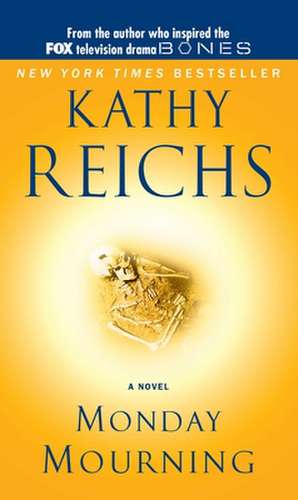








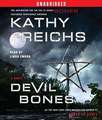
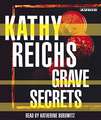
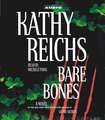
![206 Bones [With MP3]](https://i2.books-express.ro/bs/9780743582476/206-bones-with-mp3.jpg)



